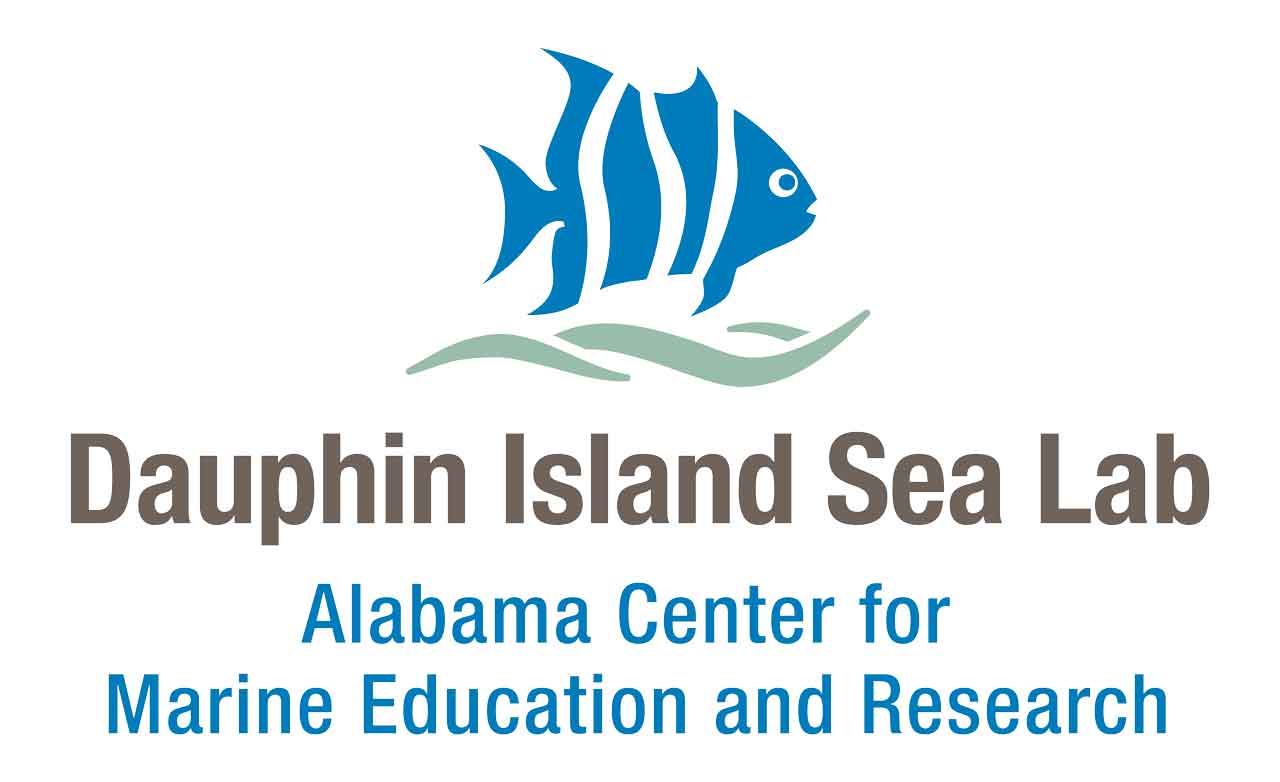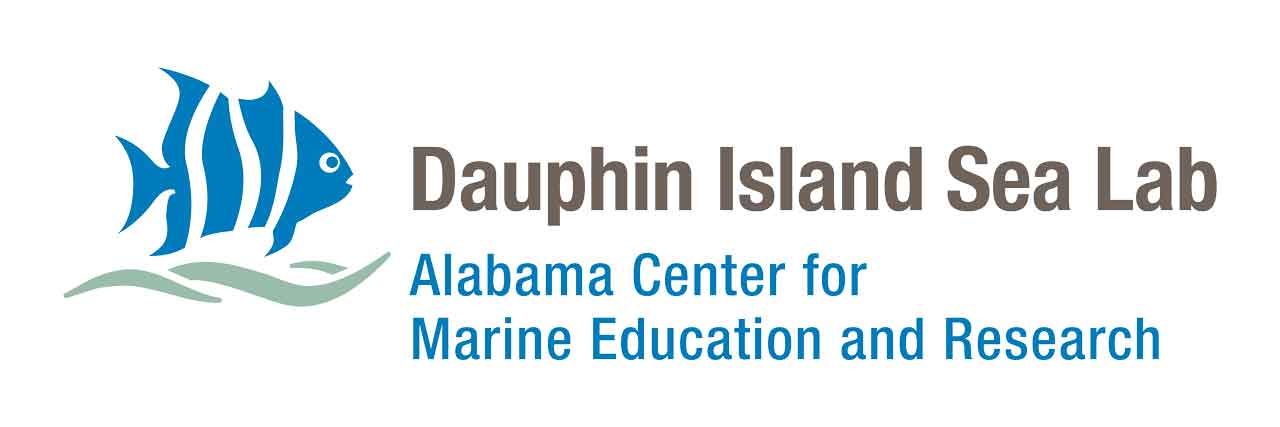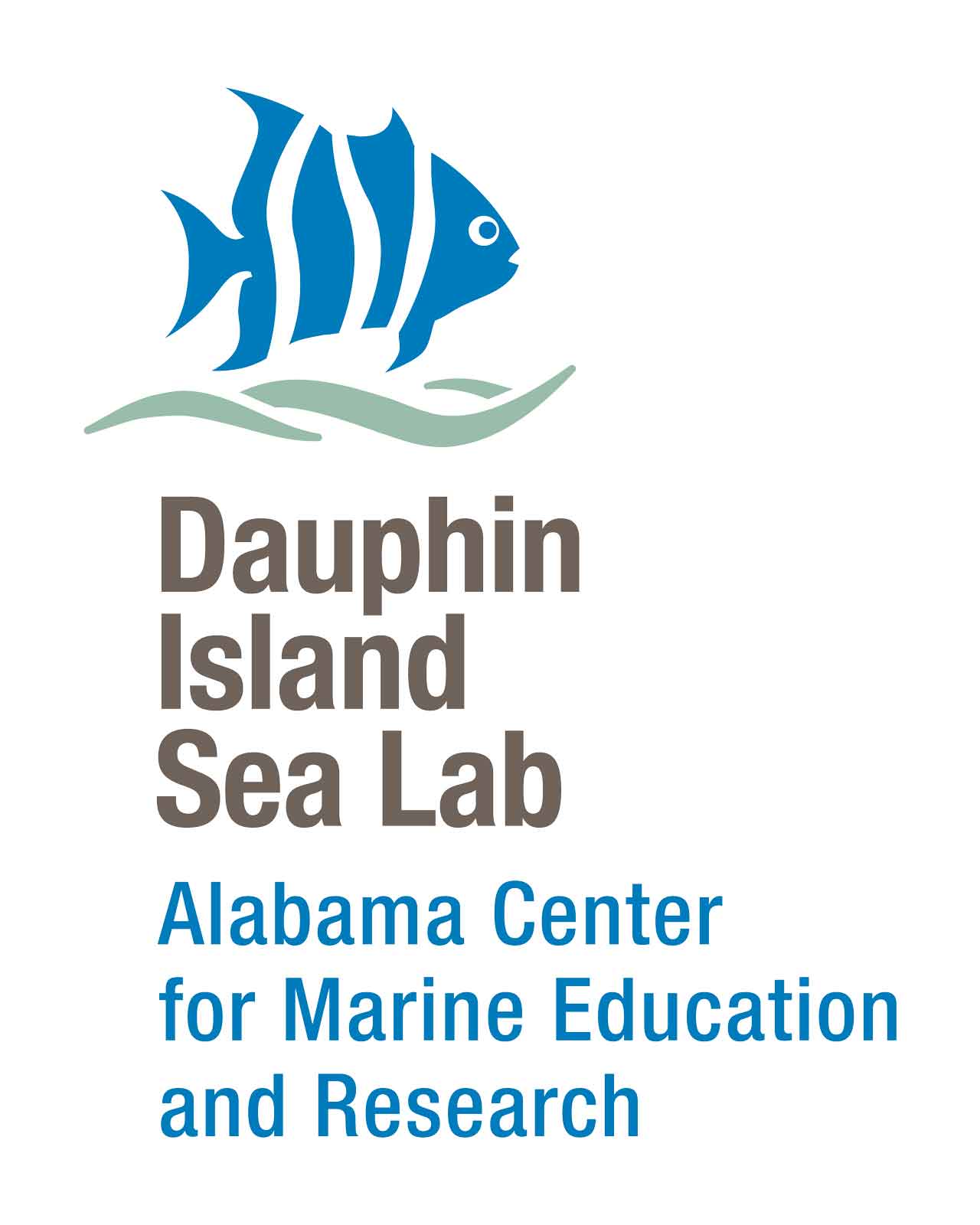Press & Media Kit

Story and Mission
Located on a barrier island in the Gulf of Mexico, the Dauphin Island Sea Lab was founded in 1971 by the Alabama legislature to provide marine science programs for many of the state’s four-year colleges and universities. Twenty-two member institutions comprise the Marine Environmental Sciences Consortium (MESC).
The faculty and students at the DISL work toward the combined purposes of conducting pure and applied research, and delivering educational programs for individuals and organizations interested in and dependent upon the marine environment.
Vision
The Dauphin Island Sea Lab’s (DISL) mission is to become a center for transformative oceanic and coastal research and education.
Mission
Serve the general public, all levels of government, and the academic community, by improving ocean literacy and providing the best available science for coastal policy, including:
- Produce and disseminate knowledge regarding world oceans, coastal zones, and watersheds.
- Train future generations of oceanic and coastal scientists.
- Enhance public understanding and stewardship of oceanic and coastal resources.
Core Values
- Excellence
- Ethics and Integrity
- Diversity
- Community Engagement
- Financial Responsibility
Press Coverage
All interview requests should be addressed to the Public Relations Department. Requests should include inquiring outlet, topic to be addressed, interviewee preferences, and deadline.
In the instance, the Public Relations Department is unavailable, requests should be sent to the Executive Director’s office.
For all granted interviews, the Public Relations Department requests a copy of printed or digital materials.
Research Focus
The listing below highlights the research focus of our faculty and their students.
Ronald Baker, Ph.D.
- Coastal Nursery Grounds
- Fish Ecology
- Coastal Seascapes
- Shoreline Restoration
Ruth Carmichael, Ph.D.
- Water Quality
- Bioindicators of Human Influences
- Shellfish Ecology
- Marine Mammal Ecology
Brian Dzwonkowski, Ph.D.
- Coastal Estuarine Hydrodynamics
- Extreme Events in Marine Systems
- Coupled Physical-Biogeochemical Processes
Kenny Hoadley, Ph.D.
- Climate Change Biology
- Coral Reef Algal Symbioses
- Phytoplankton Physiology
Jeffrey Krause, Ph.D.
- Water column silicon biogeochemistry
- Benthic silicon biogeochemistry
- Phytoplankton physiology
Sean Powers, Ph.D.
- Fisheries
- Habitat Restoration
Brandi Kiel Reese, Ph.D.
- Life in Extreme Environments
- Carbon Cycling
- Sediment and Water Biogeochemistry
- Microbial Ecology
Alison Robertson, Ph.D.
- Harmful Algal Blooms (benthic HABs, pelagic HABs, cyanobacterial HABs)
- Chemical and Behavioral Ecology
- Ecotoxicology (linking environmental exposures to organism health, food web dynamics, and human health)
- Toxinology (how and why marine toxins are produced and under what environmental/physiological conditions)
Lee Smee, Ph.D.
- Marine Ecology & Conservation
- Oyster Reef Restoration
- Chemical & Sensory Ecology
Andrea Tarnecki, Ph.D.
- Oyster Health and Disease
- Seafood Safety
- Oyster Aquaculture
Benjamin M. Titus, Ph.D.
- Evolutionary Biology
- Marine Invertebrate Biodiversity
- Phylogenetics and Molecular Ecology
- Symbiosis
- Sea anemones
- Coral Reefs
Branding
The DISL Style Guide provides details on the DISL brand, the updated logo, and the style that all DISL departments will follow.
This guide was created in December 2021.
Any questions about the DISL Style Guide should be directed to the Public Relations Department at pr@disl.edu.
Download Style Guide
Download PR Policy
Logos
Logos are also available in white and solid blue. If are in need of one of those, please reach out to the PR office.



